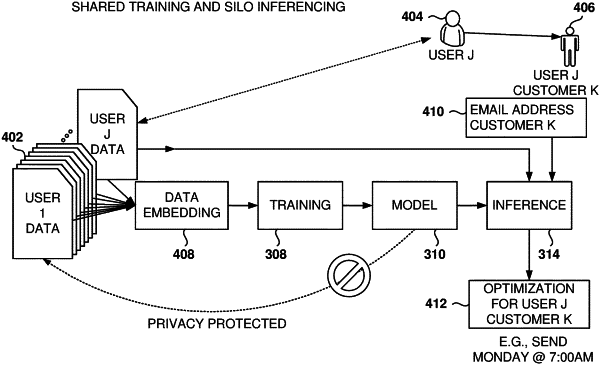| CPC G06Q 30/0254 (2013.01) [G06F 16/2379 (2019.01); G06N 20/00 (2019.01); G06Q 30/0255 (2013.01); G06Q 30/0264 (2013.01); G06Q 30/0267 (2013.01); G06Q 30/0277 (2013.01)] | 14 Claims |

|
1. A computer-implemented method comprising:
training, by one or more processors, a machine-learning program to generate a frequency model, the training utilizing training data defined by features related to user information and responses of users to previous communications to the users, the frequency model configured to determine frequencies that identify numbers of communications to be sent to users based on information about the users;
determining, by the frequency model and based on information about a first user, a maximum frequency that identifies a maximum number of communications to transmit to the first user per period of time;
receiving, by the one or more processors, a communication request to cause a computer system to send one or more communications to the first user;
determining one or more send times to send the one or more communications to the first user within the period of time based on the number of communications identified by the maximum frequency;
causing, by the one or more processors, the computer system to send the one or more communications to the first user at the determined one or more send times by providing the computer system with a non-zero engagement score that corresponds to the first user; and
based on the one or more sent communications reaching the maximum number of communications identified by the determined maximum frequency, preventing any further communication from being sent by the computer system to the first user until after expiration of the period of time by providing the computer system with a zero engagement score for a remainder of the period time.
|